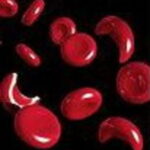There are various types of anemia, all of which are associated with a reduction in the number of red blood cells. One of the most common is iron-deficiency anemia, an anemia where red blood cells are reduced in number and smaller than normal in size. Not surprisingly, there’s another group of anemias called macrocytic anemias where red blood cells are larger than they should be. What are the most common causes of macrocytic anemia?
Causes of Macrocytic Anemia
The most common type of macrocytic anemia is megaloblastic anemia. Megaloblastic anemia is a type of anemia where the synthesis of DNA, the genetic material in the nucleus of the red blood cell, is impeded. Megaloblastic red blood cells, like the cells in all macrocytic anemias, are larger than normal, and they have certain morphological features when viewed under the microscope.
When a blood sample is sent to the laboratory to check for anemia, the lab measures hemoglobin and hematocrit levels to determine the concentration of red blood cells. They also measure they average volume of the red blood cells, a value called the MCV. This parameter is the important for making the diagnosis of a macrocytic anemia. When its elevated, red blood cells are larger than normal, which is diagnostic for macrocytic anemia.
Macrocytic Anemia Causes
Two of the most common causes of a macrocytic and megaloblastic anemia are a deficiency of vitamin B12 or a lack of folate. Adequate amounts of these vitamins are needed for DNA synthesis and when one or the other is in short supply, it leads to megaloblastic red blood cells. Certain medications, such as cancer chemotherapy drugs, can also cause a macrocytic, megaloblastic anemia because of their affects on DNA synthesis. There are also certain hereditary conditions that affect DNA synthesis.
Not All Macrocytic Anemias are Megaloblastic
Megaloblastic anemias occur when DNA synthesis is inhibited, either due to B12 or folate deficiency or due to the effects of medications, especially chemotherapy drugs. In other cases, red blood cells are enlarged, but it’s not due to problems with DNA synthesis. In this situation, the anemia is called non-megaloblastic macrocytic anemia.
Causes of this type of macrocytic anemia include chronic lung diseases, such as COPD, liver disease, hypothyroidism and alcoholism. A condition called hemolytic anemia where red blood cells rupture can also cause macrocytic red blood cells, as can certain myeloproliferative disorders – conditions that cause red blood cells to grow abnormally.
The Bottom Line?
Macrocytic anemia is easy to diagnose by drawing blood and checking hemoglobin, hematocrit and MCV. The lab will also look at the red blood cells under the microscope, if they’re too large, to see whether they’re megaloblastic in appearance. Then the key is to find the cause of the macrocytic anemia and correct it.
People who have a macrocytic anemia should have a folate and B12 level checked, and their medications should be reviewed to see if they are contributing to the problem. A thyroid panel to look for hypothyroidism and liver enzymes to check for liver disease is also helpful. When B12, folate and thyroid hormone levels are normal and medications aren’t contributing, alcoholism is the most common cause of macrocytic anemia.
References:
EMedicine.com. “Macrocytosis”.



